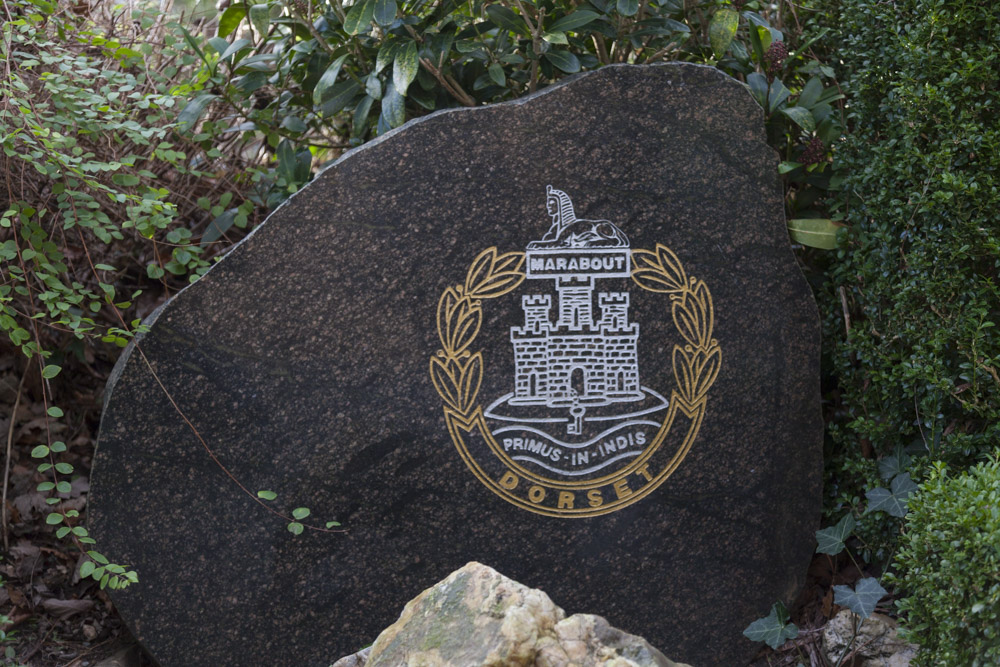Dare, W.B.
- Service number:
- 832412
- Nationality:
- British
Biography
Rank held during Operation Market Garden:
Lance Corporal
Wounded 23 September 1944
Biography:
In September 1944 W.B. Dare served in the 4th Battalion Dorsetshire Regiment. According to the Battalion's War Dairy, the battalion moved off at 06.30hrs on Saturday 23rd September 1944, from Nijmegen where they'd arrived the previous day. The rifle companies travelled in DUCK's amphibious trucks. They were held up in crossing the railway bridge at Nijmegen, but the battalion crossed the bridge at 11.30hrs. On 15.00hrs. the battalion once again was held up, this time by slight enemy mortaring and snipers. At 16.45hrs they arrived at the new area in Homoet.
As Lance Corporal W.B. Dare was reported wounded on 23 September 1944, it is most likely this has happened in this mortaring and sniping incident around 15.00hrs, as this is the only incident during the day where casualties have been reported. He was shot in the leg.
This battalion's movement during the day is written by Walter Caines's A Brief Account of the 4th Battalion The Dorsetshire Regiment. He describes:
"After holding the mentioned Bridge [at Grave] for three days and nights, the Battalion moved off, this time by march route some three to four miles towards Nijmegen, from there the Battalion was conveyed in Ducks (Amphibious vehicles) and travelled on to the outskirts of Nijmegen, where positions were taken up, holding again a Bridge over the Canal. This position was held for one night [22/23 September]. The next morning a move was ordered for the Battalion to move through Nijmegen, which was now being heavily shelled, but half way over the WAAL the column was halted, owing to the armor in front being somewhat stuck. Here the 5 Dorsets and the 7 Hampshires were engaged in small battles ahead of the tanks. During this halt, the Battalion was able to prepare and issue a meal, consisting mostly of tea and haversack rations again. The weather was still hampering movement, for rain still fell heavily. The Battalion was then ordered to move forward, turning off to the left parallel with the River WAAL, and travelled on some two miles, turning North along the original axis of advance. 214 Brigade joined, and engaged the enemy in Elst to the right. The Battalion then pushed on to the village of Homoet. During this advance the 7 Hampshires knocked out several Tiger Tanks with their own weapons. Some heavily shelling was experienced by the Battalion, and several vehicles were hit and damaged. The position of the Brigade was now as so, the Battalion on Homoet, and the 5 Dorsets occupied positions to the right, and the 7 Hampshires to the left. Homoet was situated some three miles South of the River Lek [River Rhine], overlooking ARNHEM."
In the book "They Couldn't Have Done Better: The Story of the Dorset Regiment in War and Peace 1939-67" by Christopher Jary, the incident has been scripted in more detail.
"Now, early on the 23rd, the 5th Dorsets were sent, followed by the rest of 130 Brigade, to join the Cornwalls and deliver more ammunition, medical supplies and food to the increasingly desperate 1st Airborne. Supported by a squadron of thank from the 13/18th Hussars, the enormous 130 Brigade column made good progress but, as it negotiated a corner and crossed a narrow bridge, it was fired on by German tanks from the direction of Elst. The leading part of the column arrived safely in Driel after a ten-mile dash but the second half, commanded by Gerald Tilly, was held up. Infantry and anti-tank guns had to be deployed and smoke put down before the rear of the column could finally move on."
The attack came from the right (direction of Elst), as is mentioned by Caines. This means the Battalion was near Valburg at the time of the attack, as this village is situated west [right] of Elst. This fit with the time of the attack, around 15.00hrs., as the battalion was almost at their new positions in Homoet, where they arrived around 16.45hrs. It is most likely that the corner at the small bridge refers to the former Hooge bridge. This bridge was situated about 1000 meters south of Valburg. It has been removed due to the construction of the highway A15.
According to the British Army casualty lists the 4th Battalion Dorsetshire Regiment sustained the following casualties on 23 September 1944, which most probably where a result on this incident at Valburg.
- Private Basil George Bozier (14227225)
- Lance Corporal W.B. Dare (832412)
- Private G.W. Moffat (6030904)
- Private T.C. Naylor (6146785)
- Prvate A.F. Pilgram (14382162)
- Private A.W. Pugsley (5726724)
- Private Frederick George Roper (5723158)
- Private C.R. Sibley (5731399)
There was also reported one fatal casualty. His name was Private Frank Lott (5733529). According to the Graves Concentration Report Form he was field-buried 30 yards from South-East corner of X-roads in small orchard. The crossroads where the Report refers to is the main crossing in Valburg, nowadays the crossroads Tielsestraat, Valburgseweg, Stationsstraat and Reethsestraat (Café- Partycentrum De Viersprong). This fit with the Graves Registration from the local authorities were it is mentioned that Frank Lott was buried behind a hedgerow in the garden of the Zwartkruis-family, Valburgseweg in Valburg.
This also indicates that at the time of the German attack to column of the battalion was situated between the Hoogte bridge (south of Valburg) and the mean crossroads at Valburg.
Do you have more information about this person? Inform us!
Sources
- - British Army casualty lists - Other Ranks 1574(30)
- 'They Couldn't Have Done Better', 2014, by Christopher Jary
- Gelders Archief, 2962 Secretarie Gemeente Valburg: 8860 Military Graves
- ‘A Brief Account of the 4th Battalion The Dorsetshire Regiment, compiled by W G Caines
- Information kindly provided by Bauke Huisman | Stichting B.O.I.C.



